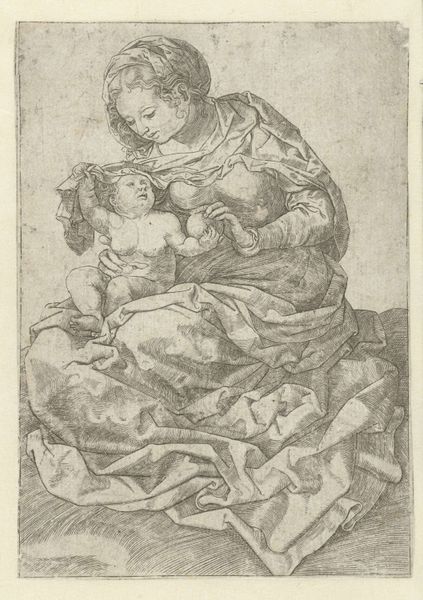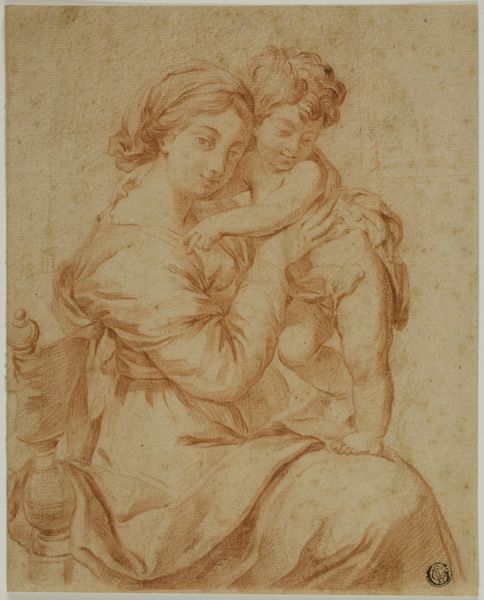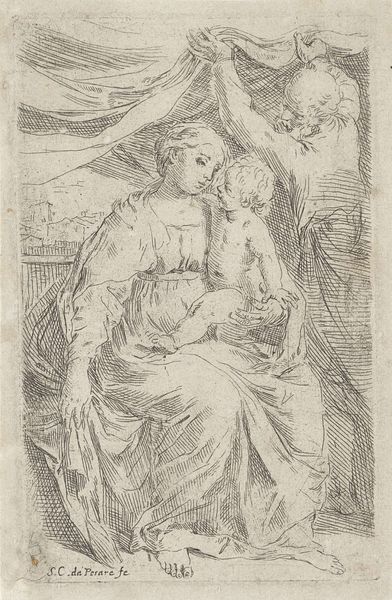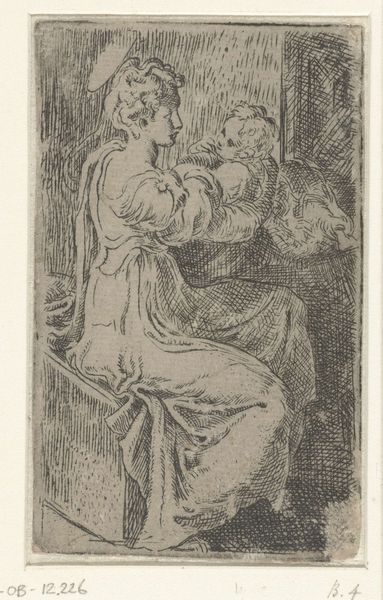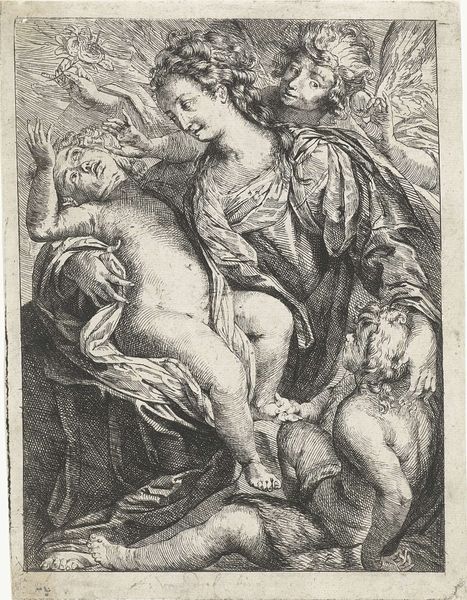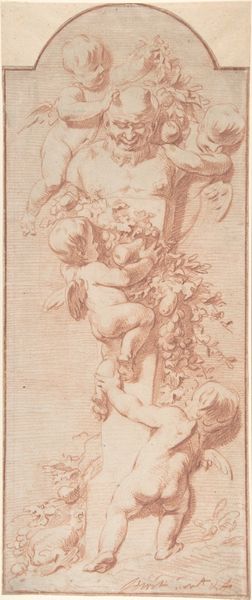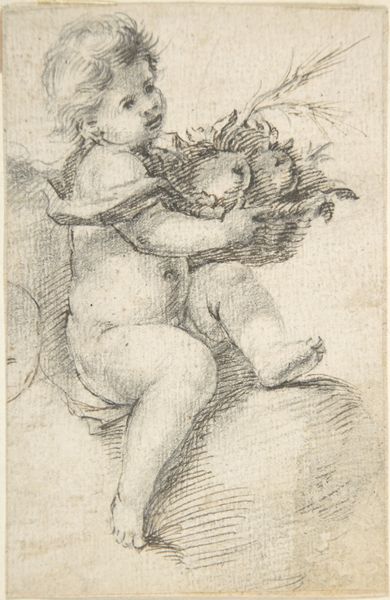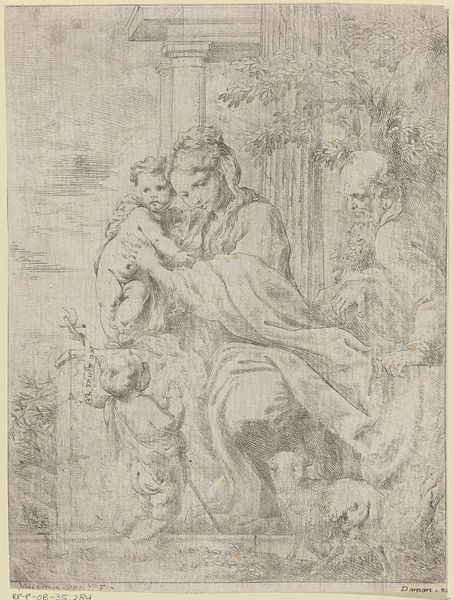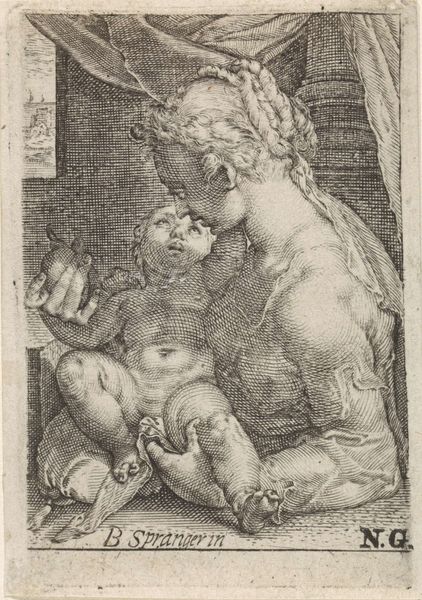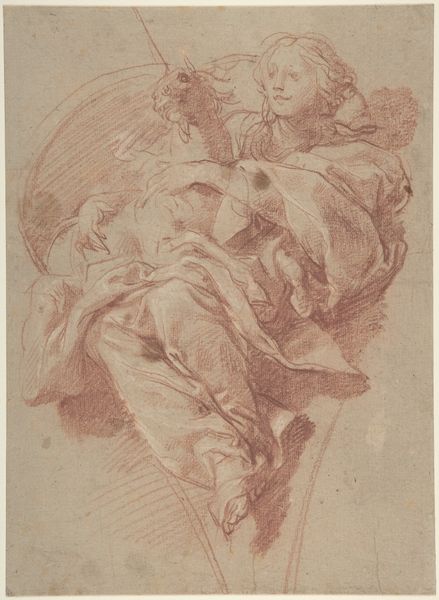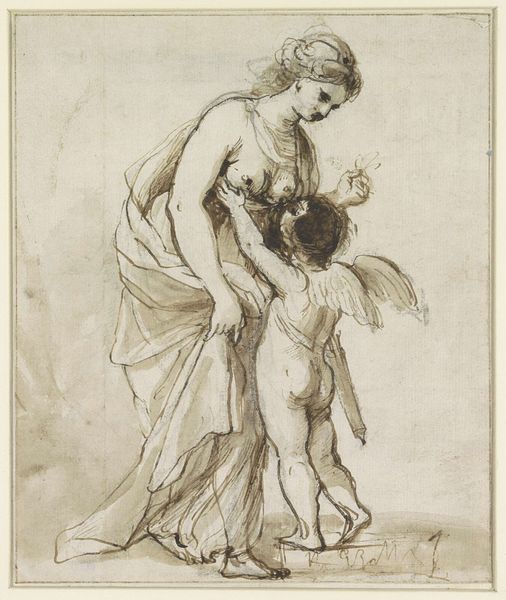
print, engraving
#
portrait
#
pencil drawn
# print
#
figuration
#
portrait drawing
#
italian-renaissance
#
engraving
Dimensions: height 116 mm, width 85 mm
Copyright: Rijks Museum: Open Domain
Curator: Standing before us is "Maria met kind," dating roughly from 1524 to 1575 and attributed to Battista Angolo del Moro. It's an engraving, currently residing here at the Rijksmuseum. Editor: It has a delicate, almost ephemeral quality to it, doesn't it? The thin lines of the engraving give a real sense of vulnerability, the image almost dissolving before our eyes. Curator: Indeed. And it speaks volumes, this depiction of motherhood during the Renaissance. The artist is working within very established iconography, but let's consider how he navigates the Madonna-child relationship within patriarchal structures of that era. Editor: I'm immediately struck by the level of skill and the tools required to execute such detail. The texture achieved with engraving, layering line upon line – it demands immense labor. What kind of social framework allows someone to dedicate that kind of time and precision to this craft? Who supported Angolo del Moro? Curator: Those are crucial questions. And also to consider the potential audiences. Prints democratized images, making them accessible to a wider public than painted altarpieces would reach. It prompts an interesting conversation regarding production and consumption, specifically through an artform such as engraving. We are invited to examine art as more than representation of mother and child. Editor: And consider the dissemination. This wasn’t meant to remain static; prints travel, carrying ideals and aesthetics to new regions. Who had access to these images, and how did their material conditions shape how they read images of the holy mother and child? Curator: Precisely! It invites us to see beyond the religious iconography, looking into socio-political constructs around family, gender roles and female identity within a hierarchical society. Even the lines themselves can be read as constructing, framing, sometimes confining the subjects they depict. Editor: The lines also dictate tone: a fine mesh renders the softness of flesh, contrasting the bolder, more angular lines that describe fabric. Curator: Yes, let’s allow ourselves to examine these intersections within this artwork; from method of artistic creation to gendered connotations during the Italian Renaissance. Editor: An elegant fusion of artistry and labor that compels us to look closer. Curator: Indeed, let us appreciate both artistry and sociocultural dialogue sparked through pieces of this calibre.
Comments
No comments
Be the first to comment and join the conversation on the ultimate creative platform.
